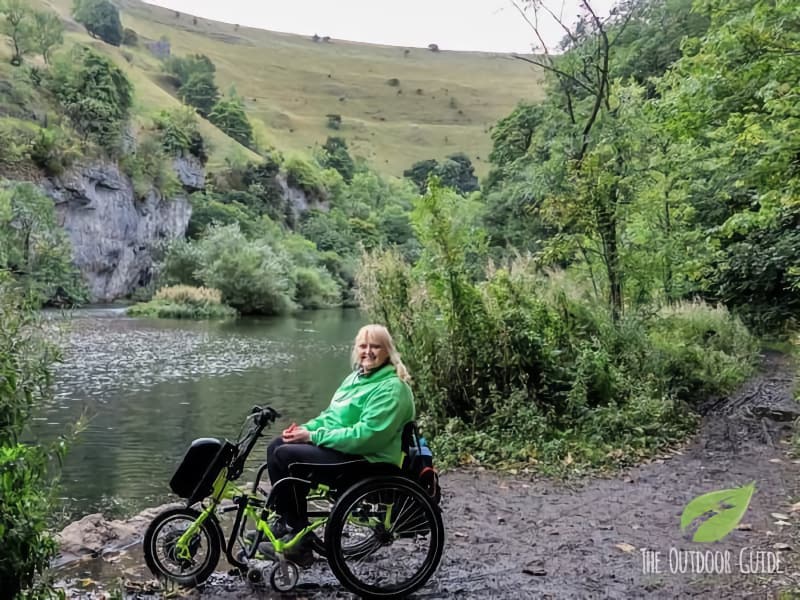If you go down to the woods today… especially near Nateby, Cumbria… you might be in for a big surprise… For from behind the big old oak tree, or appearing out of the long, tall grass, might pop out one lady with camera! Meet Suzanne McNally – landscape and wildlife photographer.
Suzanne, who lives on a sheep farm near Kirkby Stephen is potty about animals. She combines her love of wildlife and walking to pursue a career as a landscape and wildlife photography. Born in Bury, Suzanne worked in Manchester for twenty five years. “I was a city girl through and through.” proclaimed Suzanne, “ I’d wear suits and heels for work.” Suzanne started enjoying a Sunday stroll 10 years ago when she met her partner Darren, who she affectionately refers to as ‘her bit of trouser’. It was when they were out on walk that she started to take photographs of places that they visited. She discovered that she loved her new hobby and that she had a talent.
Together they ditched the city life for a rural way of living and moved to the Eden Valley. Suzanne swapped her high heels for walking boots and her briefcase for a camera and the rest, as they say, is history. Self- taught Suzanne now works full time as a freelance photographer and has had several commissions including producing the photographs for the publications by the Rusland Shepherdess, Andrea Meanwell.
Suzanne and I went for a stroll on my favourite Nateby Walk so I could to learn some more about her photography and her passion for wildlife.
Our walk began at Stenkrith Carpark, which is just below the village of Nateby, Kirkby Stephen, close to where we both live. Once through the gate, the track leads onto The Millennium Bridge. This spectacular bridge, designed by local civil engineer, Charles Blackett-Ord, crosses over the River Eden.
We stopped here awhile to take in the views and watch the water as it cascaded over the rocks below. Suzanne took a couple of photographs whilst she explained that there is always something new to see from the bridge and along the riverfrom this viewpoint. “After heavy rain, the sound of the water is immense as it pounds against the rocks. Sometimes the rocks are completely covered by the fast flowing water.” said Suzanne. She sometimes takes the lower path from here, which follows the river towards Kirkby Stephen, as there are many different kinds of wildlife that live and grow by the water. However, as this path is not wheelchair friendly, our walk today continued out along the track of the former railway line towards the village of Hartley.
Sir Thomas Bouch, (1822 –1880), a British railway engineer, probably best known for his work on the Tay Bridge in Scotland, and was responsible for the design of this South Durham and Lancashire Union Railway (later known as the Stainmore Railway). It was built between 1859 and 1861 by Chambers and Hilton. It provided a vital link between the coalfields of South Durham and the iron and steel industries of the Furness district of Lancashire and West Cumberland.
The line was closed in 1962 but gained a new lease of life when it was developed into a railway walking and cycle trail in 2000 by the North Viaducts Trust. This trail is a very popular walk for local folk and is well used by holiday makers who visit Kirkby Stephen and the Eden Valley. Along the track two of the platelayers huts have been restored. These provide covered seating areas from the Cumbrian weather, as well as providing information boards and photographs which tell a brief history of what once had been the highest pass on an English railway. Suzanne has found another use for this once upon a time platelayers huts … “They make great bird hides.” she explained. And right on cue, a cutest robin landed on a branch right in front of us and Suzanne was able to capture the photograph. Result!
On this railway trail there are two viaducts – the Podgill and the Merrygill. But how do you know which viaduct is which? (without reading the signs of course!). Well it’s easy…. Podgill has eleven arches and Merrygill has nine. There are steps leading down to a viewing area where you can see the limestone arches. Suzanne told a me a little secret… she often sees red squirrel on the steps. However, as I can’t manage the steps in a wheelchair we agreed that today the views from the top of the viaduct are just fine!
The first part of the walk is through woodland. Dense clusters of wild garlic covered the ground. Their delicate white flowers were just coming into bloom. Suzanne exclaimed that she loves this time of the year – when the earth is springing back into action. The trees are walking up and nature is growing all round. The aroma of garlic mixed with the sweet smell of the flowering Hawthorn, makes this a walk that stimulated all the senses.
The red squirrel, a native mammal to the UK, is declining in numbers and is now classified as an endangered species. This is one reason why Suzanne is thrilled to live in an area that is home to this ‘Squirrel Nutkin’. “The red squirrel can often be seen playing in the trees around here.” said Suzanne. Suzanne described how she can sit for hours at a time watching and waiting for them to make an appearance. She pointed out certain trees where she has seen them. Generally she finds them out foraging the ground in the early morning, generally around dawn. Suzanne gets up early each day and likes to get outdoors before other people are out walking. Today we were lucky to see one, but Suzanne said that she got most excited when she came across two little ‘happy chappies’ sitting next to each other on a branch.
It’s not just the red squirrel that can be spotted on this walk. Visitors are often surprised to see the colourful macaws perching in the treetops. These birds belong to John Strutt, the founder of the JS Conservation Foundation, who lives nearby.
The roe deer is often spotted hiding amongst the trees too. These slender animals will look for food in the woodland clearings. “The reddish/ grey-brown deer is relatively small, and are very timid.” said Suzanne. “I have to sit very quietly and sometime wait for hours to get one photograph.”
Also hiding in the shade of the trees are some awesome carved stones, which form part of The Poetry Path. Twelve short poems written by local poet Meg Peacocke have been carved by lettering artist Pip Hall into blocks of stone. More information about the Poetry Path Walk can be found from the Visitors Centre in Kirkby Stephen.
There is something for everyone on this walk, from beautiful boulevards of trees to wild flowers, from railway history to admiring feats of brilliant engineering.
The track comes to an end in Hartley. It is about one and half miles from Stenkrith to the end of this section of the railway. Here makes a good place to take advantage of the park bench (for those on foot!) to rest awhile, enjoy a flask of coffee and a piece of cake before retracing your footsteps back to the car park or to continue out along the country road, which evenly leads into the town of Kirkby Stephen. It is the perfect walk for any type of wheelchair. I must say – I was impressed that I wheeled myself there are back in my manual wheelchair! I really enjoyed my morning with Suzanne. I am so impressed with her patience and skill at capturing wildlife on camera.
Q&A with Suzanne
What was your first walk?
Mum gave us a printout of a walk around Ramsbottom and Holcolmbe in Bury, a nine mile circular walk which had the surprise of taking us through a military firing range. There were spent bullet shells on the ground. I said to my mum, “Good god mother, are you trying to kill us? We only went out for a bit of fresh air!”
What was your first photograph that you took?
It was of a river and trees. As we got hooked on walking, we started to venture out a bit further afield on our Sunday strolls. This particular day we went around Hurst Green, near Clitheroe, which was a bit like going on a hobbit walk in an area that looked like somewhere that Tolkien would write about. We followed the river and I got click happy taking shots of the woodland.
What is your favourite animal to photograph?
That’s easy… it has to be sheep.
And then … red squirrels and after that any animal.
Do you prefer photographing animals or landscape?
That’s easy to answer – animals!
Would you say you are a female Dr Dolittle?
To an extent – I do like to talk to the animals. I like talking to the cows the best, as they are quite responsive (lots of laughter from Suzanne). I bet you think I’m mad! To photograph wild life you do need to have a lot of patience and affection for the animals.
Do you have any pets of your own?
Yes – I have a ‘naughty taughty’ cat who has ‘personality issues’. She rules the roost at home.
I would love to own a couple of sheep. I am currently on ‘work experience’ lamb- sitting a beautiful pet Swaledale called Ewenis. I am bottle-feeding whilst her owner is on holiday. I love taking Ewenis for a walk through the meadows each evening. I am sheep mad. I collect sheep… My collection of sheep ornaments is perhaps getting a little bit out of control.
Suzanne is a regular stall holder at Brough Famers market, which is held on the 3rd Saturday of each month at Brough Memorial Hall.
She also has her work on display and for sale at Brigdehouse Tearooms in Wray, Lancashire
Her photographs can also be bought online via her website.
Follow Suzanna on Facebook, twitter, Instagram and linkedin (links via website)
















